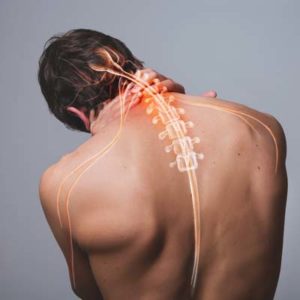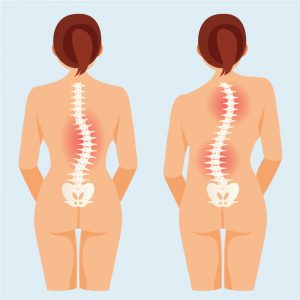Last Modified on September 30, 2025 by Dr. Tyler Meier

If you’ve ever woken up with numb, tingling fingers or found yourself constantly shaking your hands to “wake them up”, you might be experiencing the early symptoms of carpal tunnel syndrome. Let’s explore what warning signs you should never ignore and how understanding these symptoms can help you take control of your hand health before it’s too late.
Understanding How Carpal Tunnel Symptoms Develop
Picture a narrow tunnel in your wrist made of bones and ligaments – that’s your carpal tunnel. Running through this tight space is your median nerve, which controls sensation in your thumb, index, middle, and part of your ring finger. When inflammation or swelling occurs, this nerve gets squeezed like a garden hose under pressure.
The symptoms of carpal tunnel syndrome don’t appear overnight. Instead, they develop gradually as pressure on the median nerve increases over time. This is why many people initially brush off early warning signs, thinking they’ll simply go away on their own.
Early Warning Signs of Carpal Tunnel Syndrome
The first symptoms of carpal tunnel syndrome often catch people off guard because they seem so minor.
- Numbness and tingling represent the hallmark early symptoms. You might notice a “pins and needles” sensation in your thumb, index, and middle fingers – similar to when your foot “falls asleep”. This tingling often comes and goes throughout the day, making it easy to ignore.
- A burning sensation in your palm or fingers is another common early sign. Patients often describe this as feeling like their hand is “on fire” or experiencing an electric shock-like sensation that travels through their fingers.
- Occasional grip weakness during everyday activities serves as another red flag.
The intermittent nature of these early warning signs of carpal tunnel syndrome makes them particularly tricky. Symptoms may disappear completely for hours or even days, leading many people to assume the problem has resolved itself.
Progression of Carpal Tunnel Symptoms Over Time
As the condition progresses, those mild, intermittent symptoms become more persistent and intense.
- Shock-like sensations begin radiating from your wrist into your fingers or up your forearm.
- Pain triggered by specific activities becomes more noticeable. Typing for extended periods, cooking, lifting objects, or even simple tasks like brushing your teeth can trigger significant discomfort.
- Grip strength deterioration becomes more pronounced and frequent. You might find yourself constantly dropping objects, struggling to open jars, or having difficulty with tasks requiring fine motor control. This weakness results from the compressed nerve’s inability to properly signal the muscles in your hand.
- Reduced finger flexibility and stiffness often accompany the pain and numbness. Your fingers might feel swollen or “thick” even when there’s no visible swelling present.
Symptoms of Carpal Tunnel Syndrome at Night
One of the most distinctive features of carpal tunnel syndrome is how dramatically symptoms worsen at night.
- Tingling or numbness that interrupts your sleep is incredibly common. You might wake up feeling like your entire hand has “fallen asleep”, with that familiar pins-and-needles sensation preventing you from getting back to rest comfortably.
- Hands feeling completely “dead” or “asleep” while lying in bed is another telltale nighttime symptom. This occurs because many people naturally curl their wrists while sleeping, which further compresses the already-irritated median nerve.
- Relief only comes from movement – shaking your hands, flexing your fingers, or getting up and moving around. Many patients develop a nightly ritual of hand exercises just to get back to sleep.
Why do symptoms of carpal tunnel syndrome at night worsen? Research by Dr. Werner and team, published in the Journal of Hand Surgery, explains that lying flat causes fluid redistribution in your body, increasing pressure within the carpal tunnel. Additionally, the natural flexed position of your wrists during sleep further narrows this already-tight space.
Severe and Advanced Symptoms
When carpal tunnel syndrome reaches advanced stages, the symptoms become impossible to ignore and can significantly impact your quality of life. Unfortunately, by this point, the condition requires more aggressive treatment approaches.

How We Diagnose Carpal Tunnel Symptoms at CorePosture Chiropractic
Accurate diagnosis is crucial for effective treatment. At our Newport Beach practice, we take a comprehensive approach to evaluating carpal tunnel pain and related symptoms.
Patient history and symptom review form the foundation of our diagnostic process. We want to understand when your symptoms started, what triggers them, how they affect your daily activities, and what provides relief. This information helps us differentiate carpal tunnel syndrome from other conditions that might cause similar symptoms.
Physical examination and orthopedic tests help us assess nerve function and identify areas of compression.
Chiropractic BioPhysics® posture analysis sets our approach apart from traditional medical evaluations. Research shows that spinal misalignments, particularly in the neck and upper back, can contribute to carpal tunnel syndrome by affecting nerve function and blood flow to the arms and hands.
Nerve conduction studies may be recommended in certain cases to measure how well your median nerve is functioning and determine the severity of compression. However, we often find that clinical diagnosis combined with postural assessment provides sufficient information to begin effective treatment.
Take Action Today for Your Hand Health
The symptoms of carpal tunnel syndrome you’re experiencing won’t improve on their own – they typically worsen over time without proper intervention. However, with early recognition and appropriate treatment, most people can achieve significant improvement and return to their normal activities.
At CorePosture Chiropractic in Newport Beach, we’ve helped countless patients overcome carpal tunnel syndrome using our unique Chiropractic BioPhysics® approach. We don’t just treat the symptoms; we address the underlying postural and spinal issues that often contribute to this condition.
Don’t let carpal tunnel pain and the other symptoms of carpal tunnel syndrome control your life any longer. The sooner you take action, the better your outcomes will be. Contact CorePosture Chiropractic today to schedule your comprehensive evaluation and start your journey back to pain-free hand function.
FAQs
Can a chiropractor help with carpal tunnel symptoms?
Absolutely. Chiropractic care addresses not only local wrist issues but also spinal misalignments that may contribute to nerve compression. Our Chiropractic BioPhysics® approach has helped many patients avoid surgery through conservative treatment.
When should I see a chiropractor for carpal tunnel pain?
The earlier, the better. Don’t wait for symptoms to become severe. If you’re experiencing any numbness, tingling, or weakness in your hands, it’s time to seek evaluation.
Does poor posture make carpal tunnel symptoms worse?
Yes, research consistently shows that forward head posture and rounded shoulders can contribute to carpal tunnel syndrome by affecting nerve pathways from the neck to the hands.
Do symptoms always mean I need surgery?
Not at all. Many patients respond excellently to conservative chiropractic care, especially when treatment begins early in the condition’s progression.

Dr. Tyler Meier is a board-certified, licensed chiropractor and founder of CorePosture Chiropractic in Newport Beach, CA







